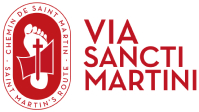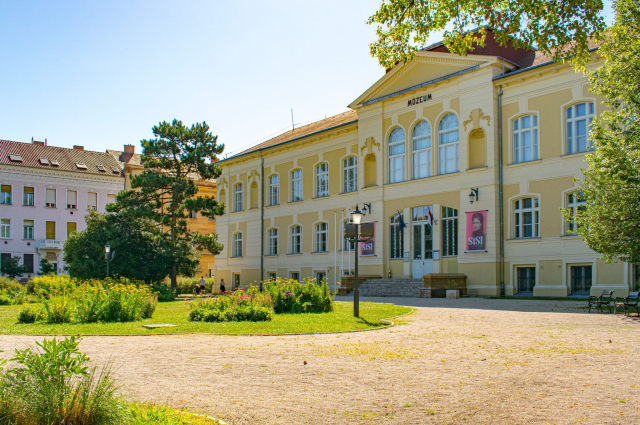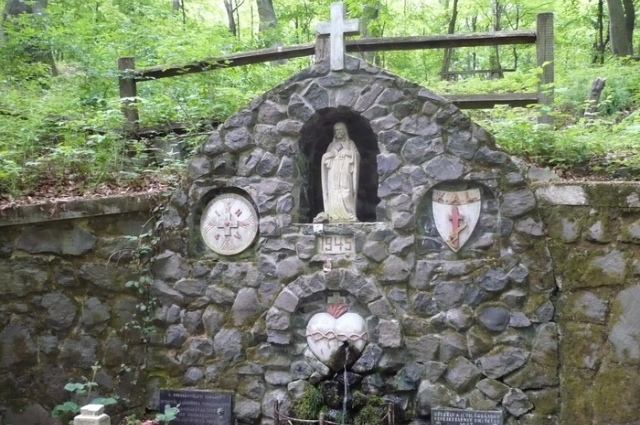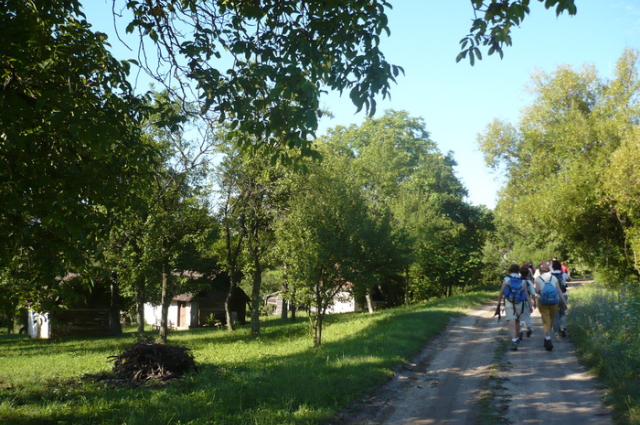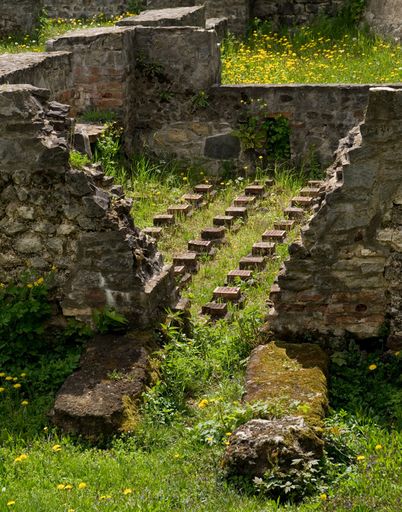
Stop point - Zalalövő

Zalalövő was already an inhabited place and a transport hub in Roman times. The settlement was granted the status of a town by the Emperor Hadrian in 124, and was then called Municipum Aelium Salla. We can assume that in the 4th century AD Martin travelled along this road to Italy. Salla was depopulated in the 5th century. The settlement of Lövő was founded on the site of the ancient town after the foundation of the Hungarian state. In the Árpád era, its inhabitants were military (arrow) shooters, which is also referred to in the name of the settlement. Zalalövő was declared a town again in 2000.
Attractions:
- Villa Publica Romkert - Salla Museum Zalalövő Kossuth u. 3.
In the exhibition rooms there is currently a permanent exhibition entitled "The Roman Age of Zala County", which was organised in 1999, and a chamber exhibition in the large central display case of the 3 rooms: "Trade, amphorae and "terra sigillata".
The first room of the permanent exhibition is devoted to the funerary customs of the Roman period in the county, and displays the artefacts related to them. Along the walls are tombstones and a small coco coffer (ossuary) for bones. The stones date from the turn of the 1st and 2nd centuries AD to the 4th century AD. Among them, the large stele depicting a hunting scene from the Zalabaksa site, which commemorates a freed slave and his family, is outstanding, as is the Bagodvitenyed stone, which depicts a family (father, mother and child) as if they were being photographed as a family in the early 20th century.
- Tájház Zalalövő Petőfi u. 35.
A peasant house built in the early 19th century hides among the 20th century houses of Petőfi Street. The postman stopped delivering letters and parcels to number 35 a long time ago. It is even more frequented by visitors, since the country house of Zalalövő is located here. The big gate on the left was for the cattle and carts, while the small gate on the left was for the people of the house and guests. The courtyard is flanked in an L-shape by a house with a pine roof and a hipped roof. Entering through the small gate, the cellar door is on the right. The cellar is located underneath the clean room. This is where potatoes, vegetables, carrots and potatoes (fodder beet) were stored. An atrium runs the entire length of the house. From here the various rooms open out. All the rooms can be accessed from the courtyard. Only between the kitchen and the bedroom is there a door inside the house. The first room of the house is the laundry room with windows opening onto the street. The washroom was mostly reserved for guests, but it was also where the girls slept.
- Szent László Church Zalalövő Szabadságtér 5.
In 1925 the old church, which was in a rather dilapidated state, was demolished. The present parish church was built in 1924-27 according to the plans of József Metzner.
The church tower has four bells, the largest of which is the St. László bell.
The cross next to the church is a replica of the Göcseji cross in the Zalaegerszeg Village Museum
- All Saints Church (medieval) - in the Zalamindszent part of the settlement, Zalalövő Petőfi u. 100.
Built in the Middle Ages, in 1250, it was ruined during the Turkish occupation. The parish priest of the church in 1550 and 1554 was a person named Ambrus.
The visitatio canonica of 1801 describes the church as follows. No crypt. The wooden choir is old. No steeple, in front of the door is a belfry with a single bell, 200 pounds, brought from Graz and blessed here. There is a cemetery next to the church, fenced and blessed. There is a cross with a painted image of the suffering Christ and the suffering Virgin Mary. It was erected and must be maintained by the faithful". The church must have been built by one of the lower or middle noble families. The church was rebuilt in 1747, when the present sanctuary was built, with the financial support of the landowning Nádasdy or Irsay and Potyondi families. It was then that the Baroque altar with its precious picture of All Saints, which still exists today, was added to the church. The altar has a twisted column form and cornice moulding in the late Renaissance-early Baroque style. It was probably built in the late 17th or early 18th century. In 1820, a late Baroque tower was built and the church roof was covered with tiles. The church was restored in 1972.
- St. Anne's Church (1747-1749) - in the Zalapataka part of the village Zalalövő Kossuth u. 62.
The church was built with contributions from the Nagy family of Zalapataka and several nobles. The construction was begun in 1747 by György Nagy, the Curia judge, and completed in 1749 by his widow Luda Anna Zsófia. The tower was built by Mihály Nagy, the deputy bailiff of Zala County.
The visitatio canonica of 1801 describes the church as follows. It has a main altar to St. Anne and two side altars, one to the Holy Cross and the other to St. Florian. It has a wooden choir without organ. It has three bells, the largest weighing 300 pounds, bought by George the Great with his own money, the second weighing 200 pounds, a gift from the widow of Peter the Great, and the third weighing 150 pounds, purchased by the people of the village. Under the church is the tomb of the Nagy family."
It was renovated in the second half of the 19th century and an organ was added to the choir. In 1908, it was renovated again, the entrance to the tomb was covered with tiles and walled in. During the First World War the bells were taken away and melted down. The present bells were made in 1935 in Sopron by the inhabitants of the village of Pataka. The church was restored inside and outside in 1994.
It is a monument church.
The Borosány Valley is located not far from the centre of Zalalövő, in a beautiful beech forest.
Around its well-watered spring, a sacred memorial site was built after the war (which also served as a water catchment area), in gratitude for the end of the Second World War.The valley has always been a popular place for pilgrimages, with locals holding the Feast of the Assumption of the Assumption of the Sickle on the second of July each year. In the autumn there was also a farewell celebration, which was mainly considered by the gypsies to be their own holiday. The area is home to several protected and rare species of plants and animals (such as cyclamen, turfgrass, chequered lily, cock's mandrake).
Borostány -lake
The average water depth is 3 metres and the fish population is very varied, making the lake ideal for anglers (carp, amur, perch, pike, catfish, compo, bream, bream, carp, dwarf catfish).Those who want to be really active can test their strength and improve their fitness on a 20-station forest gymnastics course. The trail around the lake is marked with signposts showing the direction and the specific tasks.
Accommodation options:
- Ági Guest House
8999 Zalalövő, Margaréta u 18.
Phone (36) 30 594-2166
- 8 8 8337 Álvareza, Győr, Hungary
Address: 8999 Zalalövő, Táncsics M. u. 8.
Tel.: (36) 30 446 54-83
- Borostyán Camping and Holiday Homes
Address: 8999 Zalalövő, Borostyán u. 18.
Tel.: 30 947 49 36
- Dedesi Guest House
Address: 8999 Zalalövő, Nagyfernekág 4.
Tel.: (36) 94 371-379
- Erika Apartment House
Address: 8999 Zalalövő, Cédrus u. 32.
Tel.: 30 224 33 43
- Youth Camp
Address: 8999 Zalalövő, Borostyán u. 18.
Tel.: 30 750 98 32
- Imre Guest House
Address: 8999 Zalalövő, Fenyő u. 31.
Tel.: 30 959 13 75
- Pesti Guest House
Address: 8999 Zalalövő, Petőfi u. 9/a
Tel.: (36) 92 371-324
- Number of the pension: 8, Zalövő Petrova, Petrova Petrova
Address: 8999 Zalalövő, Csekék 1.
Tel.: (36) 92 371-322
More information at www.zalalovo.hu
- Zalalövő
